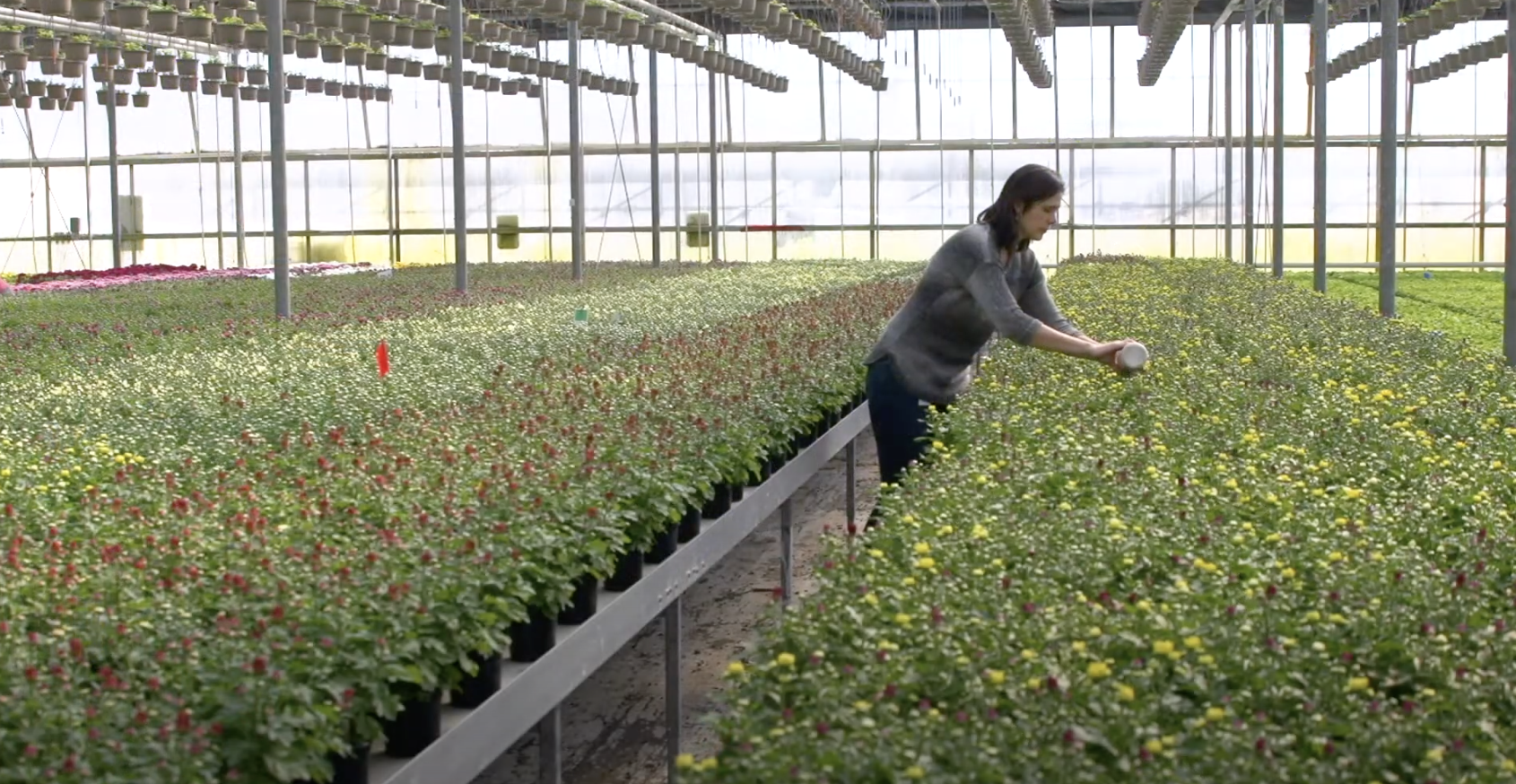
Features
Biocontrols
All the right ways to release biocontrol agents in the greenhouse
Are you handling and releasing your biocontrols correctly? Watch this five-minute video for a quick demonstration.
January 18, 2021 By Dr. Rose Buitenhuis, Dr. Sarah Jandricic, Ashley Summerfield, and Cara McCreary

Expecting a shipment of biocontrol agents? This five-minute video will demonstrate proper unpacking, handling and release techniques to maximize your return on investment.
Unpacking and storage
The contents of the package should be cool without excessive moisture or smells of ammonia and yeast. Keep bottles and tubes in a horizontal position to prevent compression of the contents and to make sure the natural enemies don’t suffocate.
It is best to release the biocontrol agents immediately. If you have to store them, note that the average fridge temperature is often too cold. Consider keeping the product at room temperature or use a cooler with ice packs.
Humidity is very important, especially for predatory mite sachets. It is better to store the products in the greenhouse instead of an office. Cooler boxes should be opened to prevent the build-up of carbon dioxide and be placed under a bench or trough to keep them out of direct sunlight.
Microbial products can be stored until their best before date. Make sure to follow the guidelines on the package since many of these products need refrigeration.
Crawling biocontrol agents
Don’t shake tubes and bottles as this could damage biocontrols. For crawling biocontrol agents like mites, gently roll them to mix the contents. Sprinkle a small amount on the foliage. Product that falls off onto the bench or floor is wasted product as most crawling biocontrol agents won’t be able to make their way back up.
Crawling bios also need plant-to-plant contact to disperse. If plant canopies are touching, releases can be made by broadcasting the product at regular intervals along the row. It is also possible to blow mites in vermiculite or brand-based products instead of manually broadcasting.
Some biocontrol companies sell special mite blowers but growers can also make their own. Calibrate it by checking for the presence of live intact mites on the crop at different distances, since some blowers can damage or kill the mites. If plants are spaced apart, other tactics have to be used to ensure proper coverage such as using individual mite sachets on each pot or plant.
Flying biocontrol agents
For flying biocontrol agents, fewer release points are needed. Apply loose product within the plant canopy to ensure they don’t fly straight up and out of the greenhouse. Be aware of the direction and strength of the airflow as these insects are easily carried off or may refuse to fly if there’s too much wind. You may want to release them at dawn or dusk when there is less ventilation.
Instead of sprinkling, you can use release boxes to prevent material from falling off the plant. Put only a thin layer of material inside each release box, distribute the bio controls evenly throughout the crop, and make extra releases directly on the plants in pest hotspots.
Satchet placement
When using parasitic wasp cards or mite sachets, hang them directly on the plants. Hang them on the stems and not on leaves that may fall off or be removed. If using cards in a propagation area with mist, hang them on a stick covered with a Styrofoam cup to prevent them from becoming wet.
Correct placement of sachets in production areas is important to optimize performance. Place them within the canopy and out of direct sunlight. This provides optimal humidity levels in the sachet so they keep producing over several weeks. Sachets placed in the sun will peak after one to two weeks and may not give your crops the long term protection you expect.
Sachets already have a small release hole. Do not enlarge the hole or tear open the bags as they will become too dry in potted crops.
Don’t allow mite sachets to touch the surface of the growing media. This can lead to excess moisture and the sachet contents may rot. Another option is to use foil sachets that are more water-resistant.
Supplemental foods
Some biocontrols can be released using banker plant systems that provide either non-pest prey or an ideal crop for reproduction of biocontrol agents. Additionally, supplemental food such as pollen, Ephestia eggs or Artemia cysts can be purchased commercially to help predators establish and reproduce. More information on the release methods or instructions for specific biocontrol agents can be found on the websites of the biocontrol supply companies.
This is one in a series of videos generously funded by the Canadian Greenhouse Conference, with support from Greenhouse Canada and Flowers Canada.
Dr. Rose Buitenhuis is research scientist in biological control at Vineland Research and Innovation Centre. Dr. Sarah Jandricic is the greenhouse floriculture IPM specialist at the Ontario Ministry of Agriculture, Food and Rural Affairs (OMAFRA). Ashley Summerfield is a senior research technician at Vineland. Cara McCreary is the greenhouse vegetable IPM specialist at OMAFRA.
Print this page